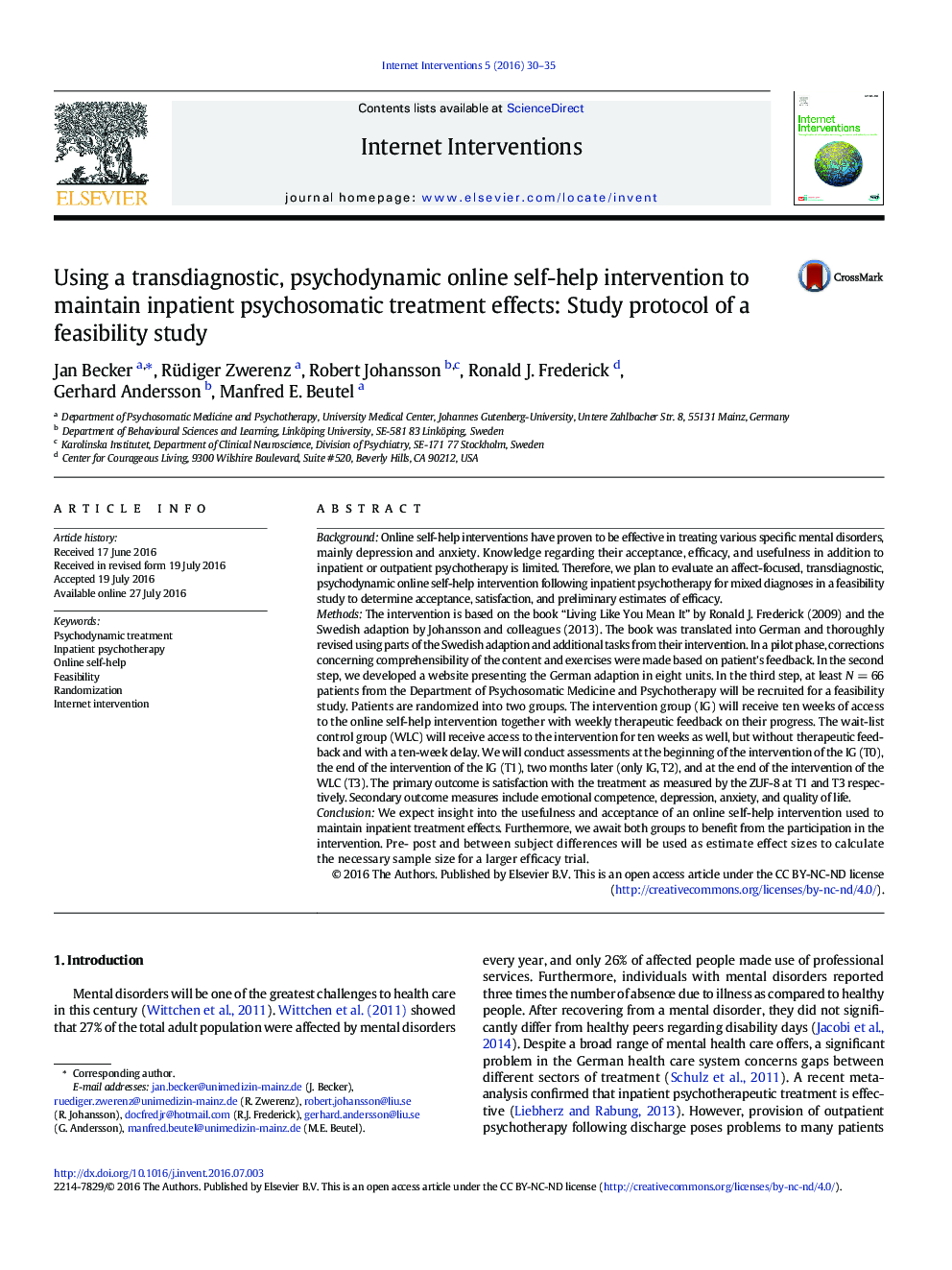| کد مقاله | کد نشریه | سال انتشار | مقاله انگلیسی | نسخه تمام متن |
|---|---|---|---|---|
| 555400 | 1451171 | 2016 | 6 صفحه PDF | دانلود رایگان |
• Study protocol of a feasibility study evaluating a transdiagnostic, psychodynamic self-help program.
• The intervention is used as aftercare after inpatient psychosomatic treatment.
• The intervention is based on two concepts, affect phobia and mindfulness.
• Primary outcome is the satisfaction with the intervention.
• Effect sizes of secondary outcome measures will be used for a larger efficacy trial.
BackgroundOnline self-help interventions have proven to be effective in treating various specific mental disorders, mainly depression and anxiety. Knowledge regarding their acceptance, efficacy, and usefulness in addition to inpatient or outpatient psychotherapy is limited. Therefore, we plan to evaluate an affect-focused, transdiagnostic, psychodynamic online self-help intervention following inpatient psychotherapy for mixed diagnoses in a feasibility study to determine acceptance, satisfaction, and preliminary estimates of efficacy.MethodsThe intervention is based on the book “Living Like You Mean It” by Ronald J. Frederick (2009) and the Swedish adaption by Johansson and colleagues (2013). The book was translated into German and thoroughly revised using parts of the Swedish adaption and additional tasks from their intervention. In a pilot phase, corrections concerning comprehensibility of the content and exercises were made based on patient's feedback. In the second step, we developed a website presenting the German adaption in eight units. In the third step, at least N = 66 patients from the Department of Psychosomatic Medicine and Psychotherapy will be recruited for a feasibility study. Patients are randomized into two groups. The intervention group (IG) will receive ten weeks of access to the online self-help intervention together with weekly therapeutic feedback on their progress. The wait-list control group (WLC) will receive access to the intervention for ten weeks as well, but without therapeutic feedback and with a ten-week delay. We will conduct assessments at the beginning of the intervention of the IG (T0), the end of the intervention of the IG (T1), two months later (only IG, T2), and at the end of the intervention of the WLC (T3). The primary outcome is satisfaction with the treatment as measured by the ZUF-8 at T1 and T3 respectively. Secondary outcome measures include emotional competence, depression, anxiety, and quality of life.ConclusionWe expect insight into the usefulness and acceptance of an online self-help intervention used to maintain inpatient treatment effects. Furthermore, we await both groups to benefit from the participation in the intervention. Pre- post and between subject differences will be used as estimate effect sizes to calculate the necessary sample size for a larger efficacy trial.
Journal: Internet Interventions - Volume 5, September 2016, Pages 30–35
